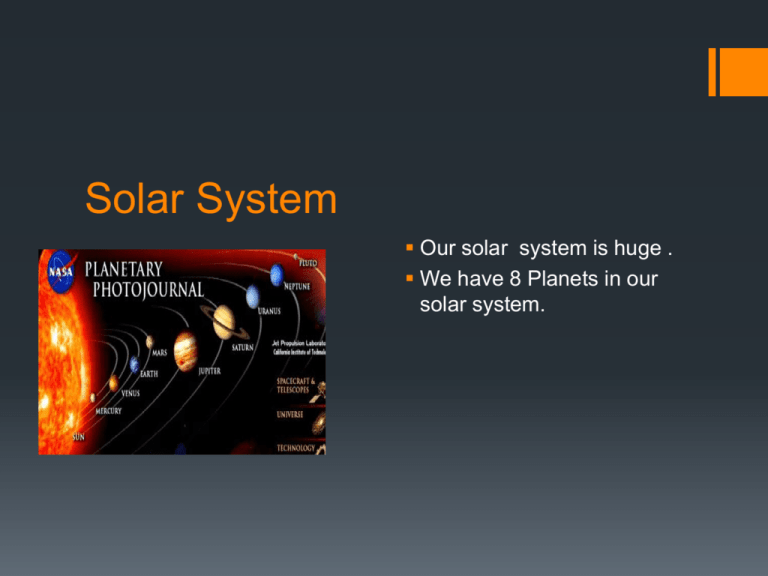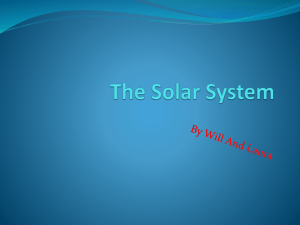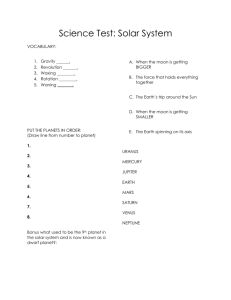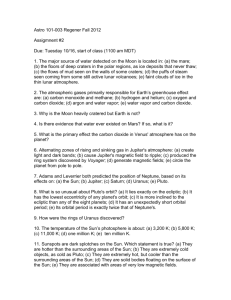Document
advertisement

Solar System Our solar system is huge . We have 8 Planets in our solar system. sun Our sun is actually a star. The sun is 27,000,000 degrees farenheight The Sun or Sol, is the star at the center of our solar system and is responsible for the Earth’s climate and weather. The Sun is an almost perfect sphere with a difference of just 10km in diameter between the poles and the equator. The average radius of the Sun is 695,508 km (109.2 x that of the Earth) of which 20–25% is the core. Mercury Mercury is as big as our moon. It is the closest to the sun. Venus Venus is the second planet from the sun. Venus is the sixth largest planet in the Solar System. EARTH The Earth is the planet we live. Water is 75 percent of our planet. Mars Mars orbits the sun every 687 Earth days. A Mars’ day is longer than on Earth. Asteroid belt 26 very large asteroids have been discovered, which is probably most of the big ones. But there are still millions of smaller ones that we have yet to see because they are too tiny, only a mile or so across. Jupiter If you weigh 100 pounds on Earth, you would weigh 264 pounds on Jupiter. Jupiter has the fastest rotation of any planet in our solar system. SATURN A year on Saturn is equal to 29.5 Earth Years. Diameter of Saturn is 119,871 km (74,500 miles). Uranus Uranus is named after the Greek god of the sky. Uranus was the husband of Gaia, the goddess of the Earth. Uranus is considered unusual because the planet is tipped on its side. The poles actually point towards the Sun. This is due to the fact that its magnetic field is tilted 60 degrees from the axis of rotation. Neptune Neptune has strong winds which is more than any other planet in the Solar System. Winds on Neptune can get up to 2,000 km/hour (1,200 miles/hour). “The Scooter” is a cloud that moves around Neptune about every 16 hours. In 1898 Voyager 2 conducted a flyby of Neptune and confirmed the presence of a magnetic field around the planet. It also found that the field was tilted like Uranus’. Voyager 2 also discovered six new moons that orbit Neptune and that the planet has more than one ring. PLUTO As of 2006, Pluto is not longer considered a planet, but rather designated as a “dwarf planet,” meaning that it is a planetary-mass object being neither a planet nor a satellite. Pluto was declassified as a planet by the International Astronomical Union (IAU). Pluto has four identified moons, Charon, the largest is not much smaller than Pluto itself. (Pluto is 2,280 kilometers wide, Charon is 1,212 kilometers wide). The other 3 are Nix, Hydra, and newly discovered S/2011 P 1 on July of 2011.







